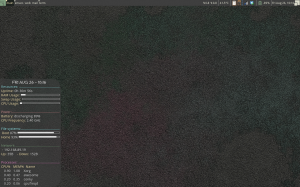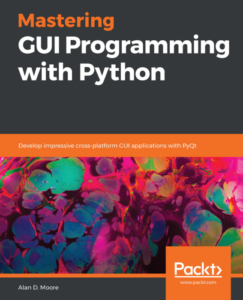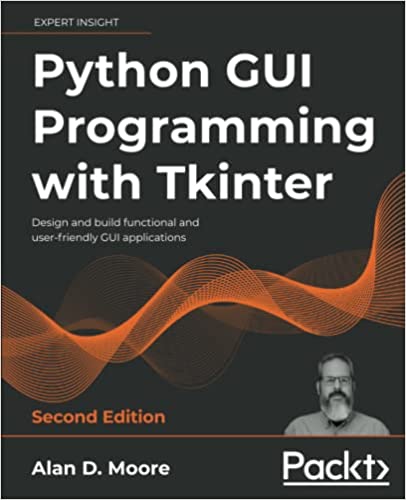By now, we have established a vocabulary with which we can discuss distributions and their strengths and weaknesses, and thus understand the best uses for them given our needs and resources. So in this article, I’ll talk about some actual “fully lightweight” distributions (for those who didn’t read the last article, “fully lightweight” refers to distros that are built from the ground-up to be small and fast. It doesn’t include lightweight remixes or spinoffs of other distros).
Another item of interest…
For those following the “Revive your old PC with Linux series”, there’s a nice little write-up at “make tech easier” called How to Build a Lightweight Linux for your Low-End Laptop.
It doesn’t go into a lot of detail, but later in my series I plan to get into building a lightweight remix from the ground (well, base-system) up, so this is in a similar vein.
Possibly of interest…
For those following the “Revive your old PC with Linux” series, this post over at Ostatic might be of interest: A Windows User’s Guide to Getting Started with Linux.
Not a lot of meat in the article itself, but it links to several good resources for those new to the field.
Awesome Window manager: my thoughts after the first month.
For years I’ve been a die-hard KDE fan; while I’ll admit to temporarily jumping ship during the tumultuous 4.0 through 4.2 release cycles, and routinely trying out other desktop environments just to see how they schoon, I’ve pretty much stuck with my pal Konqi since back around 3.4.
For my desktop, especially at work, KDE still runs the show. But KDE doesn’t seem to enjoy running properly on my laptop, and frankly does a better job of getting in the way of my workflow than accelerating it. After some time with XFCE, LXDE, Openbox, and even IceWM, I think I finally found what I’ve been looking for in a desktop environment: Awesome.
Reviving your old PC with Linux, Part III: Understanding Linux distributions
Now that your hardware is reasonably in order, and you understand the potential issues involved there, it’s time to look at the software side of things. You want to run some kind of Linux distribution on your system, but you don’t know which one to pick.
This is the point at which a lot of people would just lob a lot of funny-sounding distro names at you and expect you to check them all out and blindly try them all. Well, I’ll eventually get to lobbing those names out; but first, let’s to try to understand “lightweight Linux” — and Linux distributions in general — in a theoretical way. (more…)
Reviving your old PC with Linux, Part II: Hardware Compatibility and Prep
Welcome to part II of this series on “Reviving your old computer with Linux”.
In the last article, we classified your computer’s hardware broadly by age or processor type, but there is a lot more to Linux compatibility, performance, and suitability for different tasks than just age or processor speed. So this time, we’ll go over the major hardware components in a computer and what kind of problems you might encounter with them on Linux; as well as some general notes about preparing older hardware for an OS refit.
Reviving your old PC with Linux, Part I: Defining Expectations
This is part one of a series on making your aging, dusty — or just unused — computer useful again with some help from Linux and Free/Open Source software.
Linux has quite a reputation for rescuing old hardware from obsolescence; while this is not entirely undeserved, there’s more to it than just popping the latest Ubuntu release into that antique DOS box in your attic. An operating system is commonly called “Linux” if it’s built on the Linux kernel, but that says nothing about the software stacked on top of the kernel (which is most of the actual system). For some of these operating systems, that software is lightweight and small; for others, it’s heavy and resource-consuming. Finding a version (we call them “distributions”, or just “distros” for short) that will work well with your hardware, and work well for your purposes, is the key to successfully bringing that old PC back to life.
So what distribution should I use?
If you ask the question, “What Linux distribution should I install on my old PC?” on a typical Linux forum, you’ll likely be bombarded with a roll-call of distribution names (most of them fairly obscure); usually without respect to your needs or the hardware in question. While you could just download and try them all, a more educated approach will probably save you a lot of time (and blank CD-Rs!). So rather than take that same mistaken approach, we’re going to start by analyzing the question in more detail.
New series in the works: Reviving your old computer with Linux
In my spare time, when my brain simply demands that I stop writing PHP and Javascript and start writing English for a little, I’ve been working up a miniseries of articles on reviving an old computer with help from Linux.
I know the topic’s probably been done to death, but since tinkering with old and dusty computers is one of my hobbies, I just wanted to write some articles on this. Anyway, my teach-the-roadmap-not-the-route method of approaching these things will hopefully add a little more to someone’s experience than the usual barebones recipes you get from places like howtoforge.
I’ll probably post the first installment later this weekend, if I get time to look it over once more.
The GNOME 3 Meltdown – Datamation
Bruce Byfield flexes his usual balanced, insightful journalism in analyzing the GNOME3 situation over on Datamation: The GNOME 3 Meltdown – Datamation.
It’s a great write-up, because apart from just regurgitating Linus’s recent gripes at GNOME, it analyzes the growing divide between users of Free software and the developers thereof — a problem I’ve been noticing increasingly over the years, especially at Ubuntu forums (where under-informed griping seems to have become a spectator sport).
Testing Emacs
Just testing my ability to post from Emacs. Test test test.
I’m posting via weblogger.el, but there are some bugs involving timezone offsets that mess with the publishing time. I’ll see if I can sort those out somehow….


